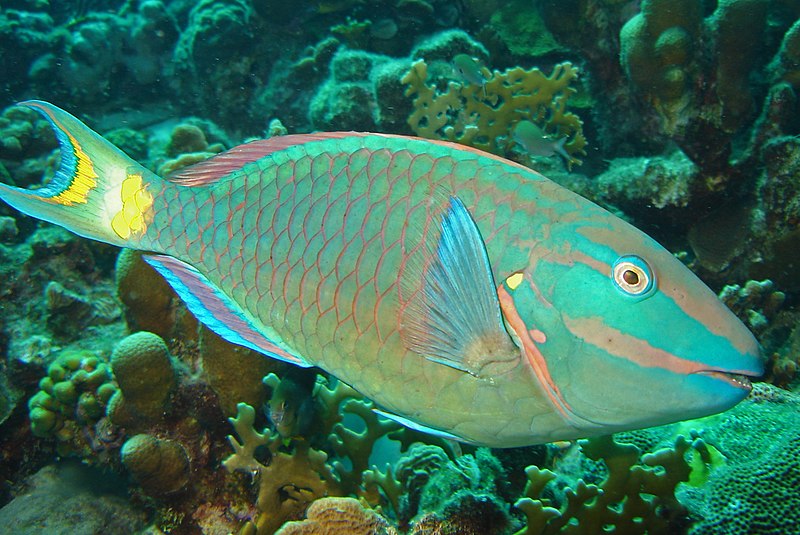 |
| Photo courtesy of Adona9 at en.wikipedia |
 |
| Photo courtesy of Adona9 at en.wikipedia |
It's time for the Creature of the Week! We are going to kick off the month of May with the Stoplight Parrotfish! Parrotfish are so named due to their beak-like mouths, which are made of teeth tightly packed together. These teeth continually grow throughout a fish's lifetime. They use their beaks to scrape algae off of coral, as well as to eat the coral polyps. Some female stoplight parrotfish have the ability to become males when there is a lack of breeding males in a population. This reproductive strategy of being born one sex and being able to switch to another later in life is called sequential hermaphroditism and can be found in other fish, frogs, and invertebrates. Read more about this fascinating fish below!
http://www.flmnh.ufl.edu/fish/gallery/descript/sparrotfish/sparrotfish.html

